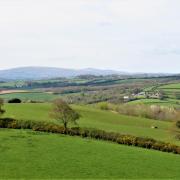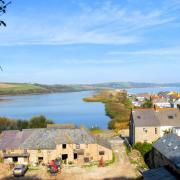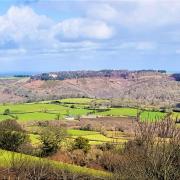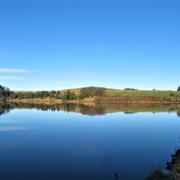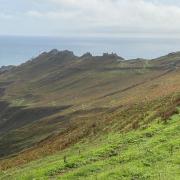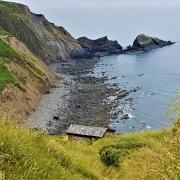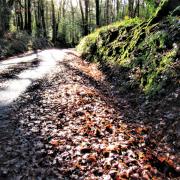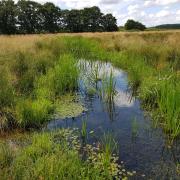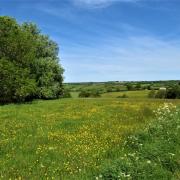The best routes to take for an extended trek across the county, don't forget water and snacks.
What constitutes a long-distance path? There’s no definite answer to that, although the British Long Distance Walkers’ Association defines one as a route of 20 miles or more. What each of us as individuals might regard as long distance is likely to vary. Personally, I feel that anything I’m not able to walk in a single day, while still taking time to enjoy the journey, probably ticks the long-distance box.
There is something pleasingly primal about reaching a distant destination on foot; a connection with our ancestors for whom walking or travelling on horseback was the only way and a day-to-day necessity, rather than being the leisure pursuit it is now.

In Devon, our vast network of paths and old green lanes can offer an even stronger link with that past; many of our leafy sequestered ways have been tramped for centuries, long before the relatively modern-day designation of long-distance footpath or national trail was ever thought of.
Last year, during a BBC Radio Devon interview about walking, I was asked about the South West Coast Path, the interviewer assuming I “must have walked it many times over”. Embarrassingly, I had to admit on air that I hadn’t, though I’ve covered most of it at different times and many sections several times over.
So perhaps, as 2022 gets underway, it’s time to aim long and pick one of the county’s many long-distance routes, to try and tick at least one of them off this year. There is a varied selection but whichever you choose it will offer a promise of beautiful scenery, the chance of abundant wildlife, glimpses of history and a great sense of satisfaction when you reach your destination.
A selection of Devon's long routes
The Two Moors Way
Linking northerly Lynmouth on the Exmoor coast with Ivybridge at the bottom of Dartmoor, this route also traverses some of the lesser-known areas and old ways of Mid Devon. The route is 102 miles long, covers some challenging terrain in places and there is open moorland to navigate. Expect superb and very varied scenery. The Two Moors Way can be combined with the Erme-Plym Trail (below) to make Devon’s very own Coast to Coast route.
The Erme-Plym Trail
Extending for just 15 miles, this is barely long distance but can certainly become so when combined with the Two Moors Way. As such, it can be a relatively easy start or finish to a much longer route. The Erme-Plym Trail starts at Wembury on the glorious South Hams coast and runs up to Ivybridge.

The Dartmoor Way
A very recently designated long-distance route that was launched in September 2020. This superb walk encompasses Dartmoor, its 108 miles of quiet paths travelling the periphery of the moor. It encounters Dartmoor’s range of glorious landscapes and visits appealing villages and towns en route. There is a ‘High Moor Link’ across the moor to facilitate two shorter, northern or southern routes.
The Exe Valley Way
This stretches for around 50 miles from the estuary of the River Exe (at Starcross) to the southern part of Exmoor – so at the northern end it is in Somerset. The main route runs to Exford, but an extra section of almost eight miles will reach the source of the river at Exe Head. The river passes many towns, villages and historic sites; it traverses pastoral farmland and wends its way through deeply wooded valleys. The route is challenging in places.
The Tarka Trail
A well-known walking and cycle path which explores the countryside celebrated in Henry Williamson’s novel, Tarka the Otter. The route describes a figure of eight, centred on Barnstaple, and covers an area from northern Dartmoor up to Exmoor and the awesome north coast with its dramatic plunging cliffscape. As well as well-surfaced sections, some along a disused railway line, the trail also uses appealing tucked-away footpaths. It can be steep in places. The whole route is about 180 miles but it is easy to select shorter sections.

The Devonshire Heartland Way
This east-west path covers just under 45 miles and runs from Okehampton on Dartmoor to Stoke Canon, just north of Exeter on the River Exe. It explores pastoral farmland and many pretty villages, often linked by historic rights of way.
John Musgrave Heritage Trail
This route was opened in 2006 as a very apt memorial to a former chairman of the South Devon Group of the Ramblers’ Association. He left a legacy for the establishment of a route that explores areas of Torbay, the South Hams and Teignbrdge. The 35 miles of the walk runs from Maidencombe to Brixham, crossing the River Dart between Dittisham and Greenway. More details can be found on the Ramblers’ Association website.
The Templer Way
A shortish long walk of just 18 miles that explores some industrial heritage. The Templer Way runs between Dartmoor and the coast at Teignmouth. It incorporates the two-mile-long Stover Canal, which was built by James Templer, owner of the Stover Estate, during the 18th century. The disused canal, now a great spot for wildlife, once transported clay used in pottery and granite which was quarried on Dartmoor. The way on Dartmoor follows old granite railroads.
East Devon Way
A lovely route of almost 40 miles, which explores some lesser-known parts of our county. The walk stretches from Exmouth on the Devon coast to Lyme Regis on the Dorset coast, both popular with holiday makers, but between these two the route winds its way inland through pastoral countryside, passing through eight villages and crossing five rivers.

West Devon Way
Covering about 37 miles of varied terrain, running from Okehampton down to Plymouth. The Visit Dartmoor website has a downloadable leaflet that describes the route. Its logo is the iconic church on top of Brentor – but ascending this steep hill is an optional part of the route.
Two Castles Trail
Hopping over the border between Devon and Cornwall, this 24-mile route links Okehampton and Launceston Castles, passing through wooded valleys and traversing open moorland. Expect lovely scenery and lots of history.
The South West Coast Path
One of Devon’s best assets, no round-up would be complete without it. At fractionally over 630 miles this is the UK’s longest national trail and Devon is home to two completely separate sections of it. It doesn’t all have to be done in one trip – many people ‘collect’ sections of the path over years.
The SWCP in North Devon extends some 90 miles from County Gate on the Somerset border to the county boundary with Cornwall at Marsland Mouth, north of Bude. The south coast section extends from the River Tamar to the Devon-Dorset county boundary just south-west of Lyme Regis and totals about 115 miles.

Don't forget to prepare
This may seem like stating the obvious but it still needs to be said: whatever you decide to do make sure you’re properly prepared. Take everything you are likely to need including suitable footwear and clothing, first aid, sunblock, water, provisions and, of course, maps and compass or GPS. Plan accommodation in advance and remember that mobile phones are often useless in remote spots.
If, like me, you enjoy walking unencumbered by a mountainous rucksack, there are walking holiday companies that will organise accommodation and luggage transfers for you, leaving you to self-guide during the day, just carrying a smaller day-pack. This is a fabulous way to undertake a long walk, catching up with your luggage each night at a comfy B&B and recharging for the following day. There are many such companies to choose from, such as Encounter Walking Holidays
Many of the routes link with other long-distance paths, to create even longer walks.
‘Starter’ information for many of these walks can be found here






